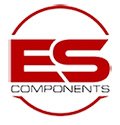
SiTime Videos
This presentation will teach designers how to leverage the benefits of MEMS oscillators versus crystal oscillators, the top eight reasons to use MEMS oscillators, and the size difference between the two oscillators.
Learn about key timing parameters that affect system performance and reliability, and how the design of MEMS oscillators impact this performance.
SiTime's Elite Super-TCXO dynamic performance is compared to best-in-class 50-ppb quartz TCXO performance with a side-by-side test of the two devices simultaneously subjected to common environmental conditions: airflow, temperature ramp, tap test, and VDD fluctuation. Results of the quartz TCXO are shown on the left; results of the Elite MEMS Super-TCXO are shown on the right.
Uploaded by SiTime Corporation on 2017-06-15.
Demonstration of exceptional dynamic performance of MEMS Super-TCXO oscillators under airflow and temp ramp.
This video highlights the BOM savings in wearables and mobile applications with SiTime's silicon MEMS timing solutions
Part 1 of 3 in our Turbo Webinar series on jitter definitions, terminology and Information on how to measure jitter
Part 2 of 3 in our Turbo Webinar series on jitter definitions, terminology and Information on how to measure jitter
Part 3 of 3 in our Turbo Webinar series on jitter definitions, terminology and Information on how to measure jitter
This presentation will provide users with a comparison of the performance, stability, and robustness of MEMS oscillators versus quartz oscillators. It will show how MEMS devices, due to inherent advantages in the design architecture, are less susceptible to environmental conditions
This presentation will provide users with a comparison of the performance, stability, and robustness of MEMS oscillators versus quartz oscillators. It will show how MEMS devices, due to inherent advantages in the design architecture, are less susceptible to environmental conditions.
Since 2007, Mr. Vashist is the CEO of SiTime Corporation, a leading MEMS and analog semiconductor company. In November 2014, SiTime was acquired by MegaChips Corporation for $200M, the largest acquisition of a venture-backed semiconductor company in 2014. This transaction combined two complementary fabless semiconductor leaders that provide solutions for the growing Wearables, Mobile and Internet of Things markets.
Industry leaders talk about 5G trends and challenges, especially related to network densification and timing/synchronization performance in dynamic environments
Learn how to best use a phase noise analyzer for the most accurate phase noise measurements. This step-by-step video tutorial provides tips on how to set up an analyzer, use the features and settings, and understand results.
Aaron Patridge, SiTime's CSO presents the benefits of Silicon MEMS Timing Solutions.
Lab Demo: Dynamic frequency over temperature of the SiT1552.
SiTime is replacing quartz timing with state-of-the-art MEMS oscillators and leading this conversion.
Piyush Sevalia gives an update on SiTime, an analog semiconductor company that uses silicon MEMS and programmable analog technology to make high performance timing solutions such as oscillators and clock generators.
Tutorial Part 1 of 2. Step-by-step instructions on how to install Time Machine II software on your computer, plus an overview of the MEMS oscillator programming kit.
Tutorial Part 2 of 2. How to program SiTime's MEMS-based oscillators with an overview of the programming kit, instructions on how to mount devices and use the part number generator, plus other features of the programmer.
Learn the top 8 reasons to use MEMS oscillators instead of quartz crystals and how to eliminate the limitations, headaches, and risks of designing with crystals.
Learn the top 8 reasons to use MEMS oscillators instead of quartz crystals and how to eliminate the limitations, headaches, and risks of designing with crystals.
Rev-1.1


